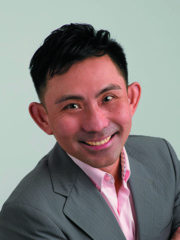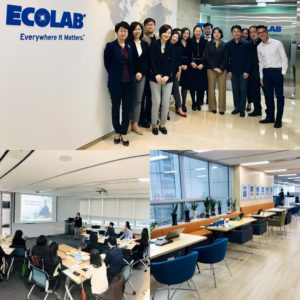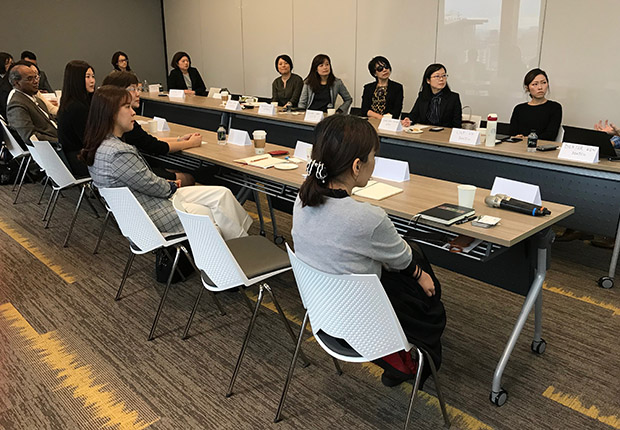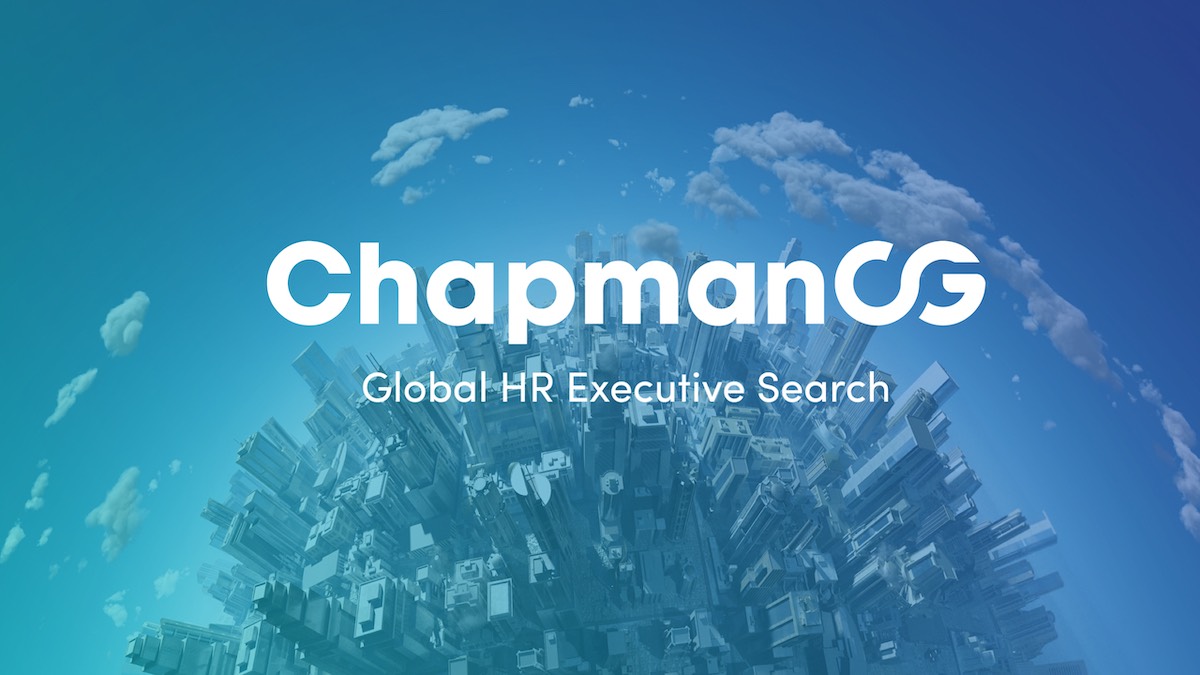What Can HR Leaders do About Diversity & Inclusion in Relatively Homogenous Societies: The Example of Korea
On the 17th of March, The Chapman Consulting Group held a networking session for a diversified group of Human Resources Heads in Seoul. The event was co-hosted by CIGNA at its Korea Headquarters overlooking the Gyeongbokgung Palace, and the topic of Diversity & Inclusion inspired enthusiastic discussion from the group. Participants included Korea HR Leaders from a broad range of companies including BNY Mellon, Danone, Diageo, Dow Corning, Henkel, Maersk, Novartis, Schneider Electric, Schroders, Unilever, and Yum!, among others.
Diversity and Inclusion in Korea
Diversity and Inclusion (D&I) is high on the agenda for most multinational corporations worldwide. D&I is not yet a mainstream topic in Korea, as it is in some other markets, but most organisations have at least formulated a strategy, which is most likely focused on the twin issues of gender diversity and the inclusion of employees with disabilities. Traditionally, business in Korea has been largely male-dominated, and most companies (both international and home-grown) view this disparity as their number one diversity priority, and are taking action to address it.
Structure vs. Culture
In the case of CIGNA, which operates under the brand name LINA in Korea, the company shared a successful case study on the introduction of some new initiatives to promote workplace flexibility, thus making the company more accessible to people with lifestyles that would otherwise prevent them from working. The results have shown that employees are engaged for less time during traditional ‘working hours,’ but they are still able to achieve more. The company has also set up a ‘LINA’s Got Talent’ programme, which spotlights employees who have certain exceptional talents and interests, from cookery or dance, to sporting abilities. These talented individuals are encouraged to share their stories among other employees, celebrating the diverse experiences and skills of the entire workforce.
This was in contrast to another company, where the Diversity & Inclusion strategies perhaps had more structure, organisation and measurability, but where the culture and philosophy of the organisation’s day-to-day practices didn’t necessarily reflect the company’s lofty corporate D&I goals. It was agreed that the ‘best case’ scenario could be seen in companies with a genuine understanding of the merits of Diversity, along with clear communication to the general workforce about Diversity policies. This was accompanied by strong metrics to measure tangible improvements in productivity and business results, as a direct correlation to these strategies. Most HR Leaders at the meeting agreed that their companies still had quite a way to go to reach this ideal goal, but that it was a good yardstick by which to measure their on-going improvements.

Diversity in Homogenous Societies
When compared to most other developed countries around the world, Korea is a relatively conservative and homogenous society. Participants agreed that there isn’t as much ‘natural’ diversity in backgrounds and opinions in Korea, as might be openly evident in other markets. However, it was noted that outsiders should not be misled into thinking that diversity is solely about gender in Korea. Attendees acknowledged that there is diversity in people’s thoughts, education, generation, religion, and other socio-economic factors, and that those who believe Korean employees react with one voice, are perhaps guilty of a certain amount of unconscious bias themselves.
In one example, an HR Leader said that her company had expanded the definition of diversity in Korea to include how to diversify employees within different departments. She commented, “In my organisation, we have functional silo issues, in which 80% of the employees of a certain function are women, and 80% in another function are men. We found it very hard to promote diversity, since the talent pool in the market is more or less the same, in terms of the male vs. female proportion.” In this case, the solution was not to initiate gender quotas that could never be met, but rather to promote movement internally between departments. This internal movement also promoted better inter-departmental communication, so that team members treated others without bias or discrimination. These issues are not unique to Korea, but they are certainly magnified here when compared with other markets.
Diversity of Career Paths
In another case study, the HR Leader of a large Korean conglomerate explained the company’s ‘returnship’ programme, which promotes the employment of people who might otherwise be left out of the workforce. The target for this programme was primarily mothers who wished to return to the workforce after having children, but who could only work a few hours a day. In Korean companies, it has traditionally been very difficult to absorb these people back into the workforce, because of a pervasive culture of working long hours, where the lines between professional and private lives are often heavily blurred. This programme offered ways in which mothers could work from home or for limited hours in the company’s office locations, sometimes job-sharing a role that would otherwise have been taken by one full-time employee.
The downside of this programme, as another Korea HR Leader mentioned, is that there might be discrimination in terms of the speed of promotion for these returning employees. It was also noted that some mothers may want to return to work full-time rather than join the ‘returnship’ programme, and that some might use the programme as a ‘stepping stone’ before applying for another full-time job within the organisation. However, at least the ‘returnship’ programme does offer options, allowing those who don’t necessarily want a high-flying career, to be a productive member of the organisation. HR Leaders in the room agreed that they often have difficulties managing the performance of employees who do a great job, but who simply aren’t ambitious and don’t want to move up the corporate ladder. Allowing for this diversity in career paths does enable these people to feel that they can continue to perform well within the organisation, without feeling pressured to apply for more significant roles that they genuinely don’t want.
Conclusion
This was another successful and lively gathering of HR Leaders in Korea, and we look forward to seeing this group again later in the year. Oscar Fuchs, Managing Director of ChapmanCG said, “It’s always fascinating to host these meetings in Korea, where the HR leadership population is strong, but their status is often overshadowed by HR Leaders in larger neighbouring countries.” Many thanks go to our hosts at CIGNA for an interesting and productive meeting.
Here’s What People are Saying…
“I have the same feeling every time I join these ChapmanCG sessions, which is that I still have a lot of things to learn from others. Discussing concepts such as ‘Returnship’ and ‘Unconscious Bias Training’ inspired me in my thinking about Diversity and Inclusion.” – Robin Joo, Dow Corning
| “I was impressed with the way that Country HR Leaders in the group proactively delivered their views on HR topics, with smooth facilitation from ChapmanCG. I’ve never experienced such a productive atmosphere in other meetings in Korea.” – Alex Jeong, BNY Mellon
“The session was enlightening and self-challenging for me, and I enjoyed the quality of diverse HR leaders from diverse companies.” – Kate Oh, Danone “This was my first time to join this meeting and I really enjoyed it. It’s very inspiring to get different perspectives from other HR professionals who have rich knowledge and experience in various industries. Thank you for the opportu |
Key Contributors:


 Devijaya Nair
Devijaya Nair Steve Brown
Steve Brown Fleur Daniell
Fleur Daniell Dee Karsan
Dee Karsan Andrea Merrigan
Andrea Merrigan Orelia Chan
Orelia Chan Stanislav Medvedev
Stanislav Medvedev Finian Toh
Finian Toh Tim Rayner
Tim Rayner Nicola Hasling
Nicola Hasling Stefanie Cross-Wilson
Stefanie Cross-Wilson


